Dry Starting Fountain Pen? - 10 Fixes That Work Every Time
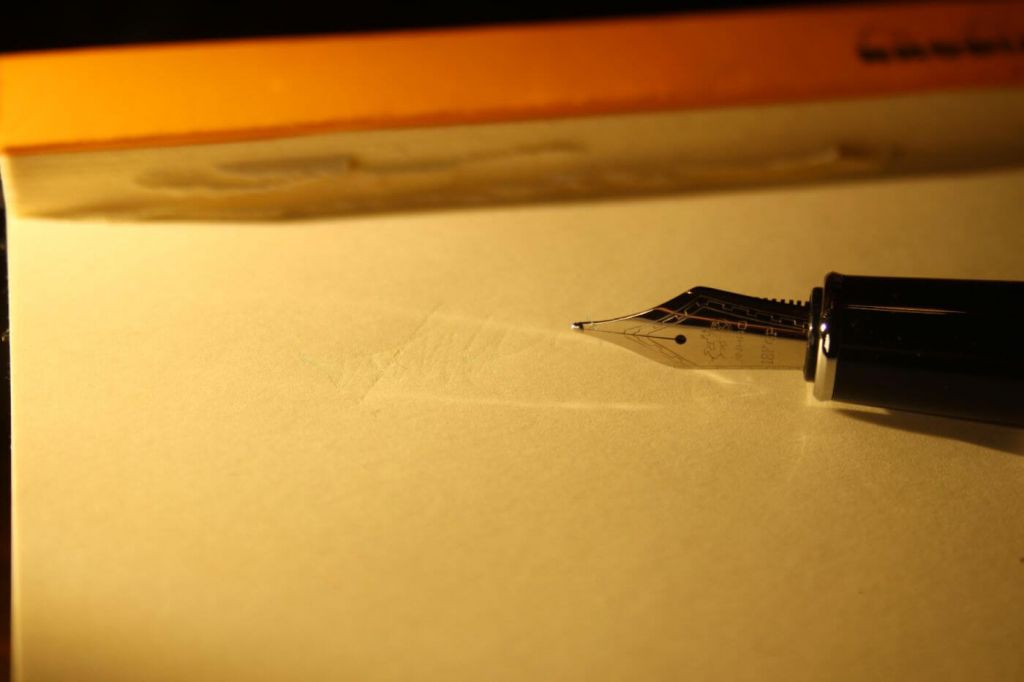
If your fountain pen is dry whenever you start to write, it's hard-starting. Luckily, you can do multiple things to easily fix it. Here are my best tips.
How do you fix a dry starting fountain pen?
- Try adjusting your grip
- Squeeze the cartridge until you see an ink drop
- Store it horizontally or facing down
- Clean the nib and feed with warm water
- Soak the pen in fountain pen flush overnight
- Use a thinner ink (or dilute the ink yourself)
- Tape off the breather hole
- Clean it ultrasonically
- If it's still hard-starting, adjust the tines
- Smoothen the nib using micro mesh
Below, I'll explain each of those solutions in more detail. But first, I want to go over the reasons your fountain might be hard-starting. Some of them are dead simple - you may want to hit yourself in the head.
In this article:
Why Is It Hard Starting in the First Place?
When you're dealing with starting problems, it is crucial to diagnose the problem correctly. You don't want to start adjusting your tines - in most cases, that will do more damage than good. There are two ways to go about fixing the problem:
- Selective: you diagnose correctly and only fix what needs fixing
- In the right order: you fix in order of least intrusive to most intrusive
By fixing stuff in the right order, you prevent to do major irreversible damage to your pens. So in my mind, going through the fixes one by one until your pen works is a great strategy. However, if you're interested in fixing other pens in the future as well, the better approach is to learn to diagnose starting problems correctly.
Is It Normal for Fountain Pens To Dry Start?
Whenever you're experiencing starting problems with your fountain pen, there is something wrong. That is unless you haven't used your pen for weeks or months on end. A pen that's not in use for a long period will eventually dry out and just needs a good clean.
Possible Reasons for a Hard-Starting Fountain Pen
- You're holding the pen at an odd angle
- You're storing the pen with the cap facing up
- You're using the wrong paper
- The breather hole is too big, drying out the pen
- The feed is clogged, restraining ink flow
- The ink is too viscose
- The nib is misaligned or damaged (baby-bottom)
- The nib and feed are misaligned
- The cap doesn't seal properly
I want to just quickly touch on using the right paper. I will discuss the rest of the reasons below. Fountain pens won't write well on fatty paper. If you have rested your hand on this particular piece of paper, try using a fresh sheet, or if the paper is fatty by nature, try getting something less so. Also, course paper can be problematic. Ideally, you want to use a smooth and thick paper. I prefer Rhodia Le R, which is a classic notepad for fountain pen writers. Other good brands are Clairefontaine and Leuchturm, to a lesser extent.
10 Easy Fixes You Can Try Now
Try adjusting your grip
Some fountain pens have a sweet spot on the nib: especially Fine nibs tend to be pretty unforgiving. Try rotating the pen just a little bit to both sides. If that doesn't work, change the angle to the paper. Most fountain pens need to be held at a slant and won't write if you hold them at a 90-degree angle to the paper.
If there's still no ink coming out, check whether you can write after dipping the nib in some ink. If it writes, your problem is most likely with the feed, not with your technique or the nib.
If you don't have any ink standby, you can squeeze out a standard ink cartridge into a plastic cup. I have these white plastic cups beside my desk for pen maintenance; it's a great tip if you frequently need to clean or maintain your pens.
Squeeze the ink cartridge
Sometimes the fix is really easy: you simple unscrew the fountain pen section from the body, and squeeze the ink cartridge. Look for an ink drop to form at the nib's bottom. Pro tip: put a piece of sacrificial paper on your desk or you might leak on your desk. If this fixes your problem, bravo, it was just a case of dry ink clogging up the cartridge or feed. The problem might return shortly though, as dry ink has a habit of creating trouble until you clean the pen properly.
Store it horizontally or facing down

Some people store their fountain pens with the cap facing up, as you would with other pens. This will prevent the ink from saturating the feed. Since it takes a while for the ink to travel down (sometimes it can take a minute or two!), it won't start immediately. The fix is very simple. Store your pens horizontally or place them cap down from now on. A word of advice: make sure you don't drop them in your pen cup, tapping the cap ... That will ensure a right mess inside your cap.
Clean the nib and feed with lukewarm water
In most cases, a hard starting fountain pen comes down to a feed problem. The feed is an intricate black plastic labyrinth that controls the leak of ink to the nib. Over time, it can clog up with ink pigment, dust, or even paper particles. Every fountain pen needs a good clean now and then.
Luckily, this is a super simple process. Get out your cartridge or converter, rinse the nib and grip section under the tap (use lukewarm water). In some cases, this might do the trick. If not, you want to soak the pen overnight.
Soak the pen in fountain pen flush overnight
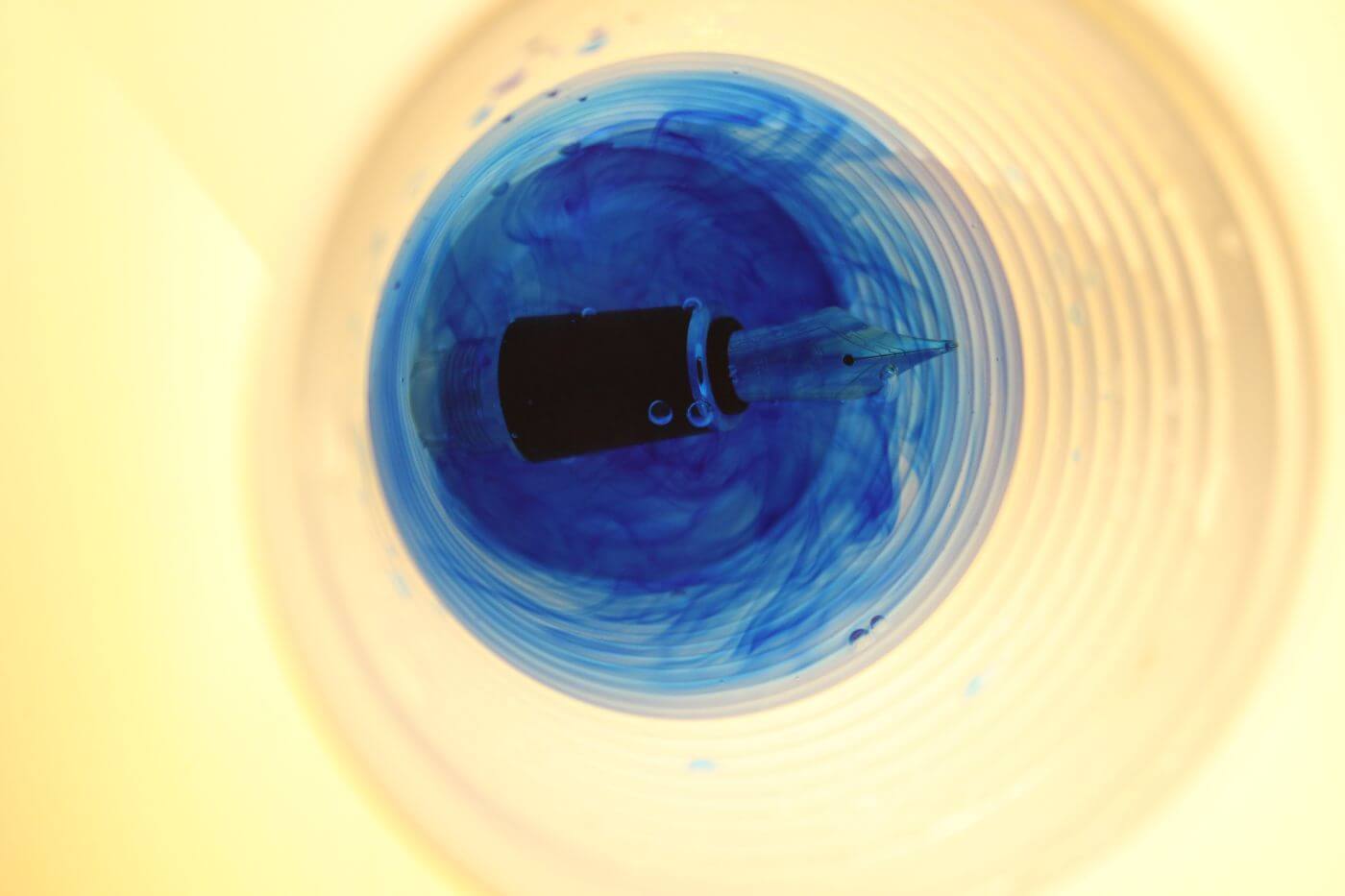
When the feed is clogged up badly, you want to soak the pen overnight. I recommend trying to soak it in regular tap water first, before resorting to pen flush. In most cases, a long soak will dissolve any remaining ink pigment. After the soak, make sure to flush the feed by using an ink converter or a syringe bulb (check on Amazon).
If this doesn't fix your problem, you might want to use pen flush. You can get pen flush at most pen stores, but you can also easily make your own. Pen flush is a bit more aggressive, and some pens don't like it, so I use it as a last resort only.
You can use this well-known pen flush from Amazon or create your own for $2.
Use a thinner ink (or dilute the ink yourself)
Pens use different feed designs. Some pens are wetter, meaning they have larger ink channels in the feed, others are dryer, meaning they have smaller ink channels in the feed. If your pen keeps drying out, even after cleaning with regular use, chances are your ink is to viscose for this particular pen. The feed just can't handle all the pigment.
Switching out to a thinner ink will probably do the trick. Most of the well-known brands (Parker, Waterman, Lamy) carry black and blue inks that are generally pretty thin. If you don't have any other inks at hand, you could also dilute the ink yourself. Simply mix your ink in a plastic cup with some droplets of water. You just need a tiny bit of water to dilute it.
You could also try lubricated ink instead. These inks contain a small amount of lubrication to improve the ink flow. I've previously compiled a list of my favorite lubricated inks.
Tape off the breather hole
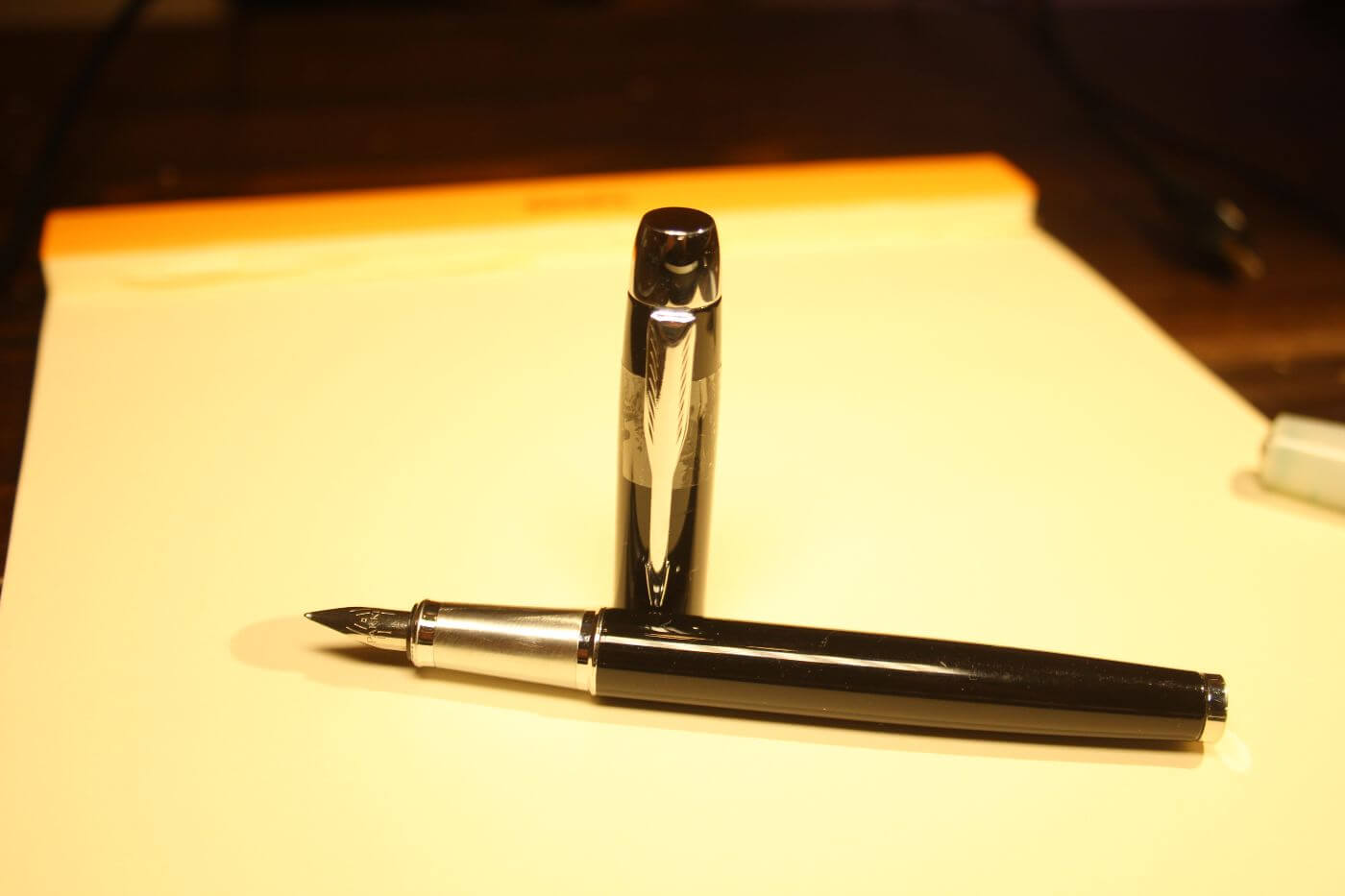
Most fountain pens have a breather hole in the cape. The breather hole is a tiny hole that is used breath, which means to get rid of condensation. When the environment temperature changes, pens start to condensate, burping up water from their ink reservoir. If the breather hole is too big due to a design flaw, you lose too much water, drying out the feed section over and over again.
I actually have a pen that does this and is infamous for this tiny design flaw. The Parker IM is a bloody dry pen in and of itself. But the breather hole is just too damn big, drying it out after just one or two days.
Luckily, there is a very easy fix: put a tiny bit of tape over the breather hole. With my Parker IM, it is located underneath the clip. If you hold it against light and hold it at an angle, you can just see it. Try it, tape her up and see what happens. For me, it worked wonders.
Clean it ultrasonically
This step is optional. If all of the above doesn't work, you might want to do a more thorough cleaning. Specialists use an ultrasonic cleaning machine that uses sound waves to clean every nanometer of the pen. You can get your own, but you could also bring it to a fountain pen specialist, who will most likely have one already and charge you a small fee for the clean.
Vintage pens might not like ultrasonic cleaning, so you want to check before using this method.
If it's still dry starting, adjust the tines
If all of the above doesn't work, you might have a nib problem. You could save yourself a lot of trouble by checking out the nib first, but let's say you have eliminated any problems with your technique, materials, or the feed. The tines might be misaligned.
There is no pretty way to realign tines: you simply have to bend them until they are perfectly aligned once more. You don't want to do this without a good loop or magnifying glass, and a proper pair of tweezers. If this is a particularly valuable pen, I highly recommend handing it over to a specialist, as these kinds of nib tweaks may very well ruin your pen forever.
Smoothen the nib using micro mesh
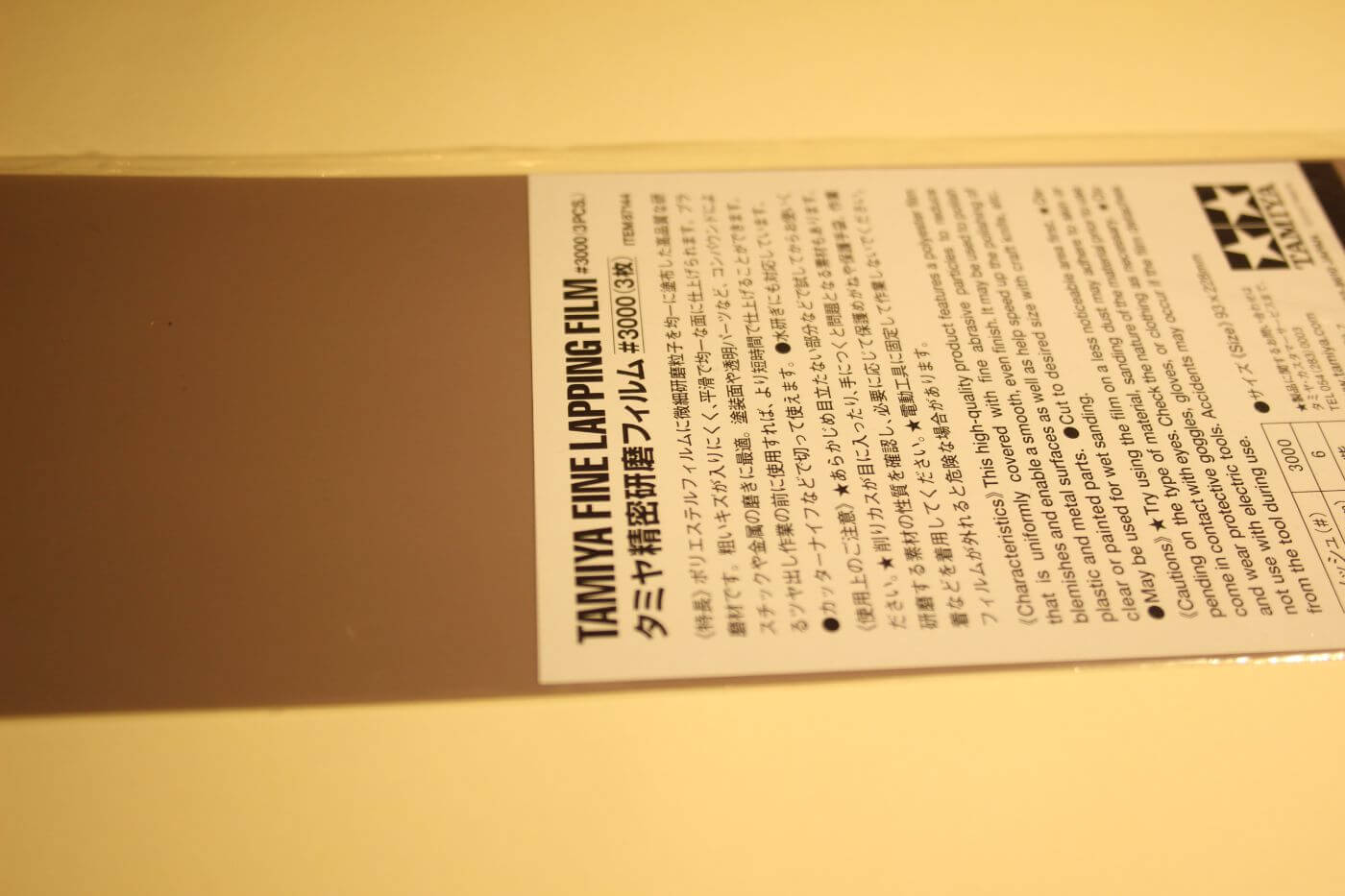
If you are sure it is a nib problem, but the tines are aligned properly, you could be dealing with baby's bottom. To fix baby's bottom, you'll have to polish the nib until it regains its original straight tine edge. I use micro mesh to do this. It is affordable and a must-have for every serious fountain pen owner. You can get it at the pen specialist, or if you don't have access to a good fountain pen store, you could probably get it at a model train store. You can also get Micro-Mesh at Amazon.
You smoothen the nib by wetting the nib (or by using the ink in the feed, if it flows properly), and writing an eight or infinity symbol over and over again on the micro mesh. You want to hold the pen like you normally would, at your normal angle, and apply only a little bit of pressure. Smooth out the nib until the baby's bottom is no longer visible or your hard starting problems are gone.
You can find which products I personally use for fixing nib problems here.
Diagnosing Starting Problems
Whenever we're dealing with starting problems, you may deal with one of three areas (in order of easiest to fix to hardest to fix):
- You operate the pen incorrectly: there's something wrong with your technique
- You use the wrong materials: there's something wrong with the environment
- The pen has design flaws or is damaged: there's something wrong with the pen
All possible problems fall under one of these three categories. Interestingly, I always tend to skip the first two and blame the pen for its problems (which are clearly its, and not my fault. However, the first two problems are the easiest to fix, so it pays to check them first.
How do you diagnose a hard starting fountain pen?
- Inspect whether the cap seals properly
- Inspect the nib and check for tine misalignment or baby's bottom
- If you suspect baby's bottom, the pen should write under extra pressure
- Inspect the feed by dipping the nib in ink and check whether the pen writes
- If this fixes the problem, you most likely have a feed problem
Checking the cap
When trying to figure out what the problem is, you want to do a couple of things. The first thing I suggest doing is checking the cap. In some cases, the pen dries out because the cap doesn't seal properly. You could have damaged the cap by dropping it, for example.
To check the cap, you want to try to wiggle it. Most caps wiggle a little, but you should only be able to move it side to side just a tiny bit. If the cap doesn't seal, you should get a new cap, which with most entry-level pens simply means getting a new pen. However, don't forget to check the warranty: you might get lucky.
Checking the nib
Next, you want to take a look at the nib of the pen to see if it's damaged or misaligned. You can use a loop or magnifying glass to do this. The nibs need to be aligned and have a somewhat straight edge. You want to check the top of the nib, and the side view.
If you can see any misalignment, you want to check for two things:
- Tine misalignment
- Baby's bottom
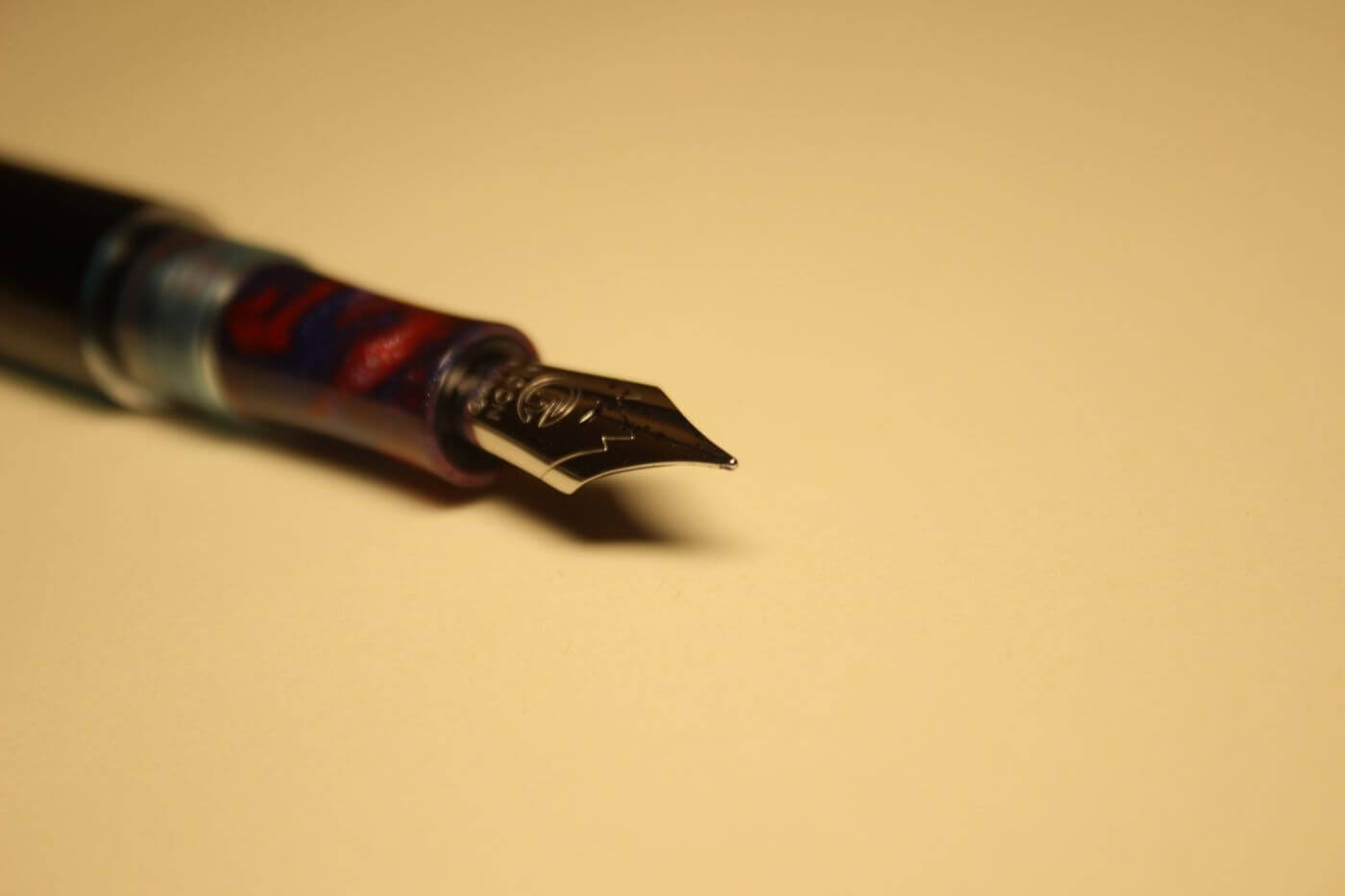
Baby's bottom
Look at the nib from above using a loop. If the two tines don't end in a straight edge but have a crescent dip to them instead, that's what's called 'baby's bottom' - because it's a tiny bottom! It's a funny name for an annoying problem (although baby's bottom can be a potentially annoying problem too, as many young diaper-wiping parents might agree). If you see a tiny bottom, that will most likely be your problem. After you see this crescent dip, another way to verify the problem is to try to write while putting a lot of pressure on the pen. If it writes properly, you have baby's bottom.
A nib with baby's bottom won't lay ink on the paper, as it only touches the paper with its outermost edges. There's not enough contact area to lay down ink.
Please note: only apply pressure after you have diagnosed baby's bottom visually. You get baby's bottom by putting too much pressure on the pen in the first place, forcing the tines outward and wearing out the inner sides of the tines.
Tine misalignment
Tine misalignment is easy to diagnose. If you look at your pen from the side, the tines should be perfectly level. They shouldn't be crooked, with one being higher than the other. If that is the case, you are dealing with a tine misalignment problem.
In most cases, you get tine misalignment after dropping the pen on the nib or tapping it to get ink flow starting. You shouldn't tap your fountain pen on the nib!
Narrowing it down to feed or technique
If there is no visible nib damage (in most cases that won't be the problem), you want to try narrowing it down to either the feed or ink or the way you use the pen. To do this, you can try dipping the nib in ink and writing with the pen.
If it writes properly, you most likely have a feed problem (this is the problem in most cases). If it doesn't write, you are probably using the pen incorrectly.
The feed is the section that provides ink to the nib. It's the ribbed part, made of black plastic, under the nib.
Did you find the answer to your specific question?
👍 15 👎 1

Comments
robert cassidy
Loved your analysis on Hard-starts/Baby’s-bottom. Thank you.
After chasing my tail, grinding on many delightful and unsuspecting pens; it finally dawned on me that my grip might be the main problem. I’m right-handed and rotate the paper to about 45 degrees. My wrist and arm position are unremarkable, (no wrist curl), but my “tripod” finger-grip is such as to impart a C.C.Wise rotation to the pen - inadvertantly. This rotation causes the left tine to lift the ink channel OFF THE PAPER - I think.
This is a very recent realization, reinforced by your article (Number one problem; miss-use of the pen by owner - me).
So all my grinding (L. oblique/R obl/straight) to eliminate Baby-bottom: If it was successful, was more by chance
and leaves me wondering the best approach. I would appreciate if you could find the time to comment on the above situation.
Kind regards, robert C.
Leave a comment